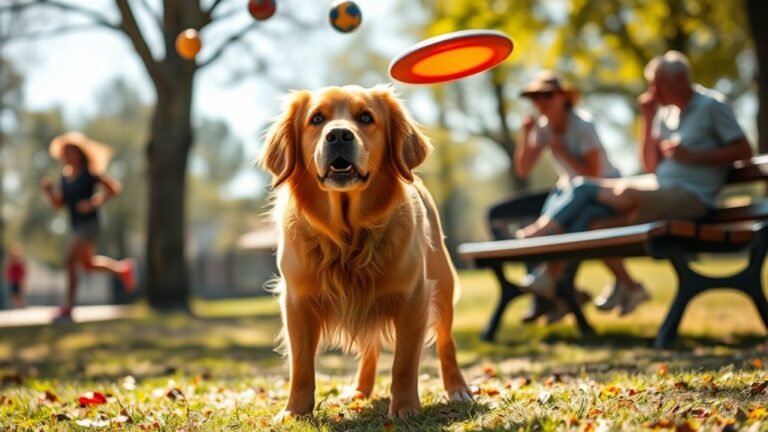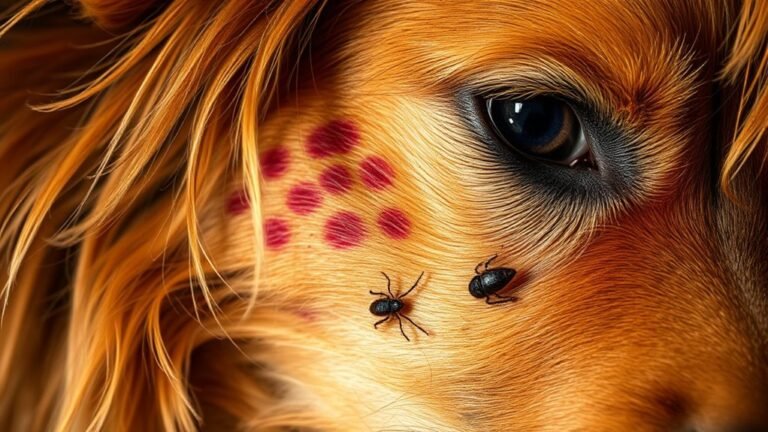Common Triggers for Dog Aggression
Dog aggression can be puzzling, but knowing why it happens helps a lot. Many times, dogs act aggressive because they are scared or want to protect their territory. But there are other reasons, too! Sometimes, dogs feel protective of their family or friends. Other times, they might be uncomfortable in a social setting or just plain frustrated.
Understanding these reasons can help you keep your dog, and others, safe. So, let's look at some common triggers for dog aggression more closely. This way, you can better understand your dog's behavior and how to help them.
Key Takeaways
- Fear-based aggression happens when dogs see something strange or scary. They feel threatened and may react aggressively.
- Territorial aggression shows up when a dog senses unfamiliar people or pets near their home or space. They want to protect their area.
- Protective aggression occurs when dogs think their family is in danger. They may act defensively to keep their loved ones safe.
- Social aggression arises when dogs feel uneasy in social situations. They might react badly around other dogs or people if they feel nervous.
- Frustration-induced aggression happens when dogs feel stuck or held back. If they cannot reach something they want, they may lash out.
Understanding these triggers helps dog owners manage behavior and create a safer environment for everyone.
Fear-Based Aggression
When a dog feels scared or threatened, it can show fear-based aggression. This is a way for the dog to protect itself. You might see this behavior when your dog encounters something new that makes it anxious. Instead of being mean for no reason, your dog's aggression comes from fear.
To help your dog feel better, it's important to know what scares it. Creating a safe space at home can make a big difference. Using treats and praise when your dog behaves well can help boost its confidence.
You can also help your dog get used to its fears slowly. Be patient and understanding. This builds trust and helps your dog feel secure. With time, this can reduce fear and improve your relationship with your furry friend.
Territorial Aggression
Territorial aggression is a common behavior in many dogs. This behavior happens because dogs want to protect their home and family.
You might see your dog mark their territory by urinating on things. This acts like a sign to show other animals that this area belongs to them. Dogs do this to keep boundaries.
When they feel someone or another animal is a threat, they might react aggressively. Unfamiliar people or pets coming near can upset them. It's important to understand what makes your dog feel this way.
By knowing your dog's boundaries, you can help them feel safe. Training can teach them how to behave calmly, so they won't react aggressively.
With the right support, you can create a peaceful environment for both your dog and your family.
Protective Aggression
Protective aggression in dogs happens because they want to keep their loved ones safe. This behavior comes from their natural instincts to defend their pack. Dogs see their humans as part of their group. When they notice something or someone that seems like a threat, they may bark or growl to warn you. This shows they care about your safety.
It's important to know the difference between being protective and being overly aggressive. Setting clear rules and socializing your dog can help them feel safe.
When they feel secure, they're less likely to act aggressively around others. Understanding your dog's feelings can help you manage their protective instincts better.
Social Aggression
Some dogs show social aggression. This can happen when they feel uncomfortable around other dogs or people. It may also be because they haven't met enough other pets or people. You might see your dog act aggressively if they think their place in their group is in danger.
Sometimes, this aggression looks like play. Your dog might mistake a fun moment for competition.
To help your dog, you can gradually introduce them to new situations. Use positive rewards when they act calmly. Giving them chances to interact in safe settings can build their confidence and lessen aggressive behavior.
It's important to understand how your dog feels. By helping your dog gain social skills, you help them feel safe and happy with other dogs and people.
Frustration-Induced Aggression
Dogs can show frustration-induced aggression when they feel trapped or limited. This usually happens when they see something they want but can't reach it, like another dog or a person walking by. If your dog seems excited to play but is held back by a leash, you might see some signs of this behavior.
Here are some things to watch for:
- Your dog might bark a lot. This is called leash reactivity.
- They may lunge or pull, trying to get away.
- Frustration can make them snap or growl.
Knowing what triggers this behavior can help you manage your dog better. It's important to understand how they feel to keep both of you safe and happy.
Recognizing their emotions can make your time together more enjoyable.
Resource Guarding
Resource guarding is when dogs protect things they think are valuable, like food, toys, or their favorite spots. This behavior can come from feeling unsure about having enough resources.
When your dog growls or snaps when someone comes near their bowl or toy, they aren't being mean; they're just trying to keep what they feel they need to be safe and happy.
It's important to understand this behavior. If you can calmly and gently help your dog feel more secure, it can lower their need to guard.
Giving them reassurance and showing them that they don't need to worry about losing their favorite items can make a big difference.
Building this trust can create a safer and happier space for both you and your dog.
Frequently Asked Questions
Can a Dog's Breed Impact Their Likelihood of Aggression?
Yes, a dog's breed can affect how it behaves, but it doesn't mean the dog will be aggressive. There are many myths about how different breeds act. Each dog has its own personality. It's important to understand your dog as an individual. This helps you create a safe and loving space for both of you. Take time to get to know your dog and their needs. This understanding keeps everyone happy and safe.
How Can I Safely Introduce My Dog to New People?
To help your dog meet new people safely, start by keeping it simple and positive. First, let your dog see new people from a distance. This helps your dog feel safe. If your dog stays calm, give them a treat. This shows them that meeting new people can be good.
As your dog gets used to the new person, let them get a bit closer. Always watch how your dog feels. If they seem relaxed, that's great! If not, give them space. The goal is to make sure your dog feels comfortable and happy.
Take your time with this. Every dog is different, and that's okay! With patience and kindness, your dog will learn to enjoy meeting new friends.
What Management Techniques Can Reduce Aggression Incidents?
To help reduce aggression incidents, use simple techniques that change behavior and manage the environment well. Focus on praising good actions and keeping your dog in a safe space. This can create a friendly and calm atmosphere for your pet and those around you.
Reinforcing good behavior means giving rewards when your dog acts nicely. This encourages them to keep being good. At the same time, make sure to control things around your dog. Remove anything that might upset them or lead to aggression.
Are Aggressive Behaviors Always Preventable Through Training?
Aggressive behaviors in dogs are not always avoidable with training. Some dogs may act aggressively due to their genes or past experiences. It's important to know these influences to create a supportive and loving environment for your pet.
When Should Professional Help Be Sought for Aggressive Behavior?
If your dog is always acting aggressive, it's time to get help from a professional. This kind of behavior can be serious. A trained expert can check your dog to find out what is causing the aggression. They will suggest ways to make things better. This will help both you and your furry friend feel safer and happier. Don't wait—getting help can make a big difference!







